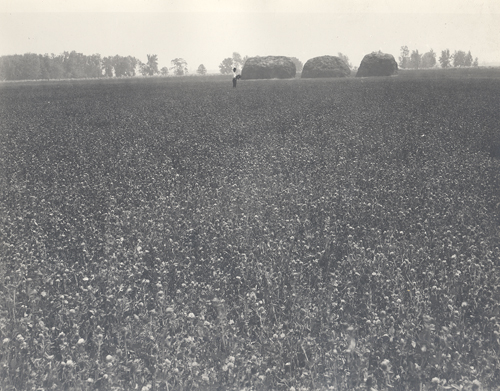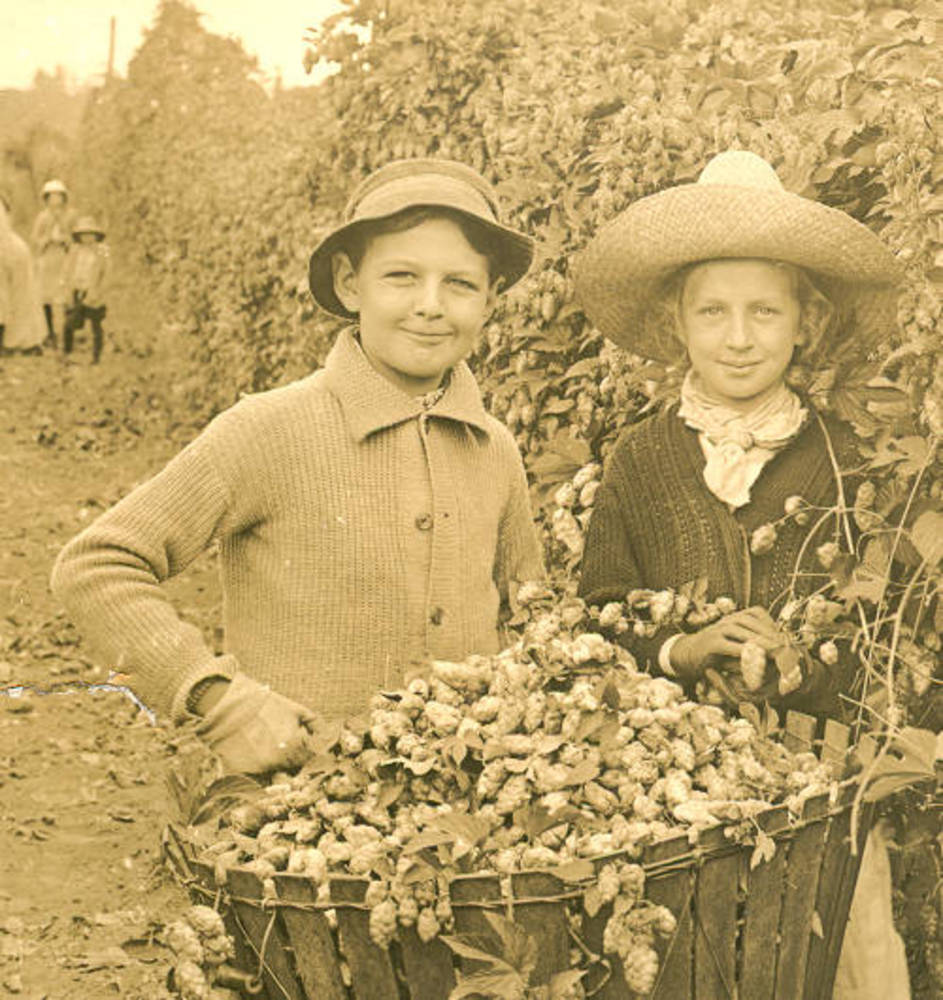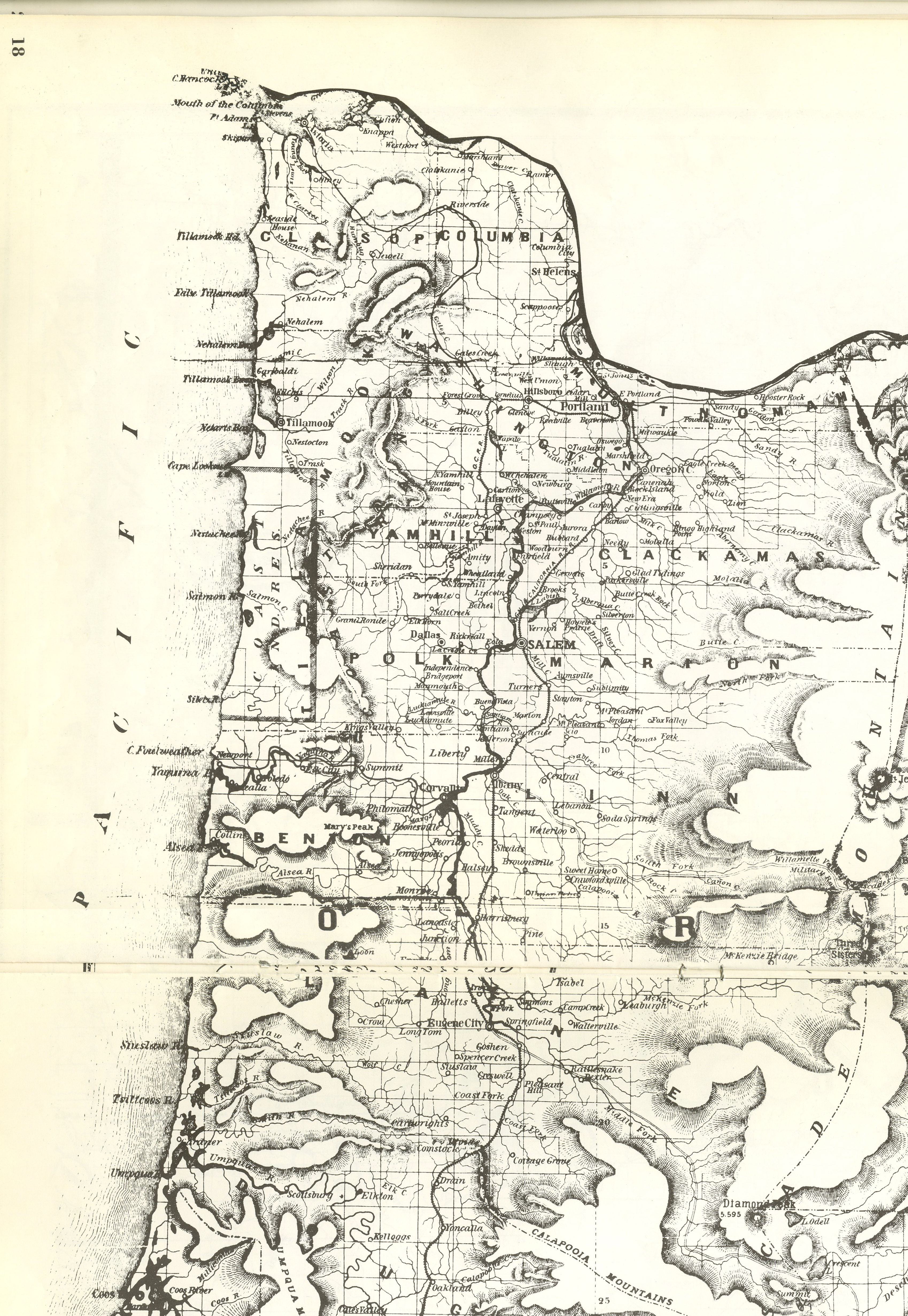The Willamette Valley, with its temperate climate, wet winters, and arid summers, is an ideal place to grow grass seed. As a result, Oregon produces more cool-season forage and turf grass than anywhere else in the world. In 2010, grass seed was the sixth highest value commodity crop in the state. With recent declines in the grass-seed market, along with environmental concerns, however, the future of the crop is unclear.
Before white settlement, the Willamette Valley was home to a variety of native grasses. Due to the introduction of livestock and overgrazing, exotic grasses replaced wild grasses by the late nineteenth century. In 1921, Forest Jenks of Linn County planted the first commercial ryegrass in the valley. By the 1940s, grass-seed production was steadily increasing due to the mechanization of agriculture and the introduction of new grass varieties.
Oregon growers now produce essentially all of the U.S. commercial production of annual ryegrass (Lolium multiflorum), perennial ryegrass (L. perenne), bent grass (Agrostis spp.), and fine fescue (Festuca spp). They also produce substantial amounts of Kentucky blue grass (Poa pratensis), orchard grass (Dactylis glomerata), and tall fescue (F. arundinacea), which is used primarily for turf and lawns.
Beginning in the 1960s, one of the industry’s agricultural techniques became the subject of legislative controversy in Oregon. The post-harvest burning of grass seed fields had been a popular technique since its implementation in 1948 to control weeds, remove leftover straw, and destroy crop diseases. Two decades later, however, people became concerned about the air pollution and smoke the technique created.
When pollution from field burning created a thermal inversion in the Willamette Valley in August 1969, Governor Tom McCall issued a temporary ban on field burning. Over five thousand complaints about air pollution in the valley were filed that year, and the complaints continued through 2009, when the practice was banned.
In 1988, a field burn near Albany got out of control. The smoke caused poor visibility, resulting in a multi-car pileup on Interstate 5 that killed seven people and injured thirty. That accident helped persuade lawmakers to consider stricter regulations on burning.
Even though the number of burned acres dropped from 250,000 acres during the 1980s to 50,000 acres during the 1990s, people were still troubled by the findings of atmospheric pollution studies conducted by the Department of Environmental Quality. In 1991, House Bill 3343 established a phase-out of field burning and a limitation on propane flaming.
In 2009, the Oregon House and Senate considered a bill mandating the phase-out of field burning in nine counties. The bill was controversial. Farmers had been burning their fields for decades, which had allowed them to plant every year and to curb diseases and weed pressure at low cost without having to use heavy pesticides. Those benefits were weighed against the negative impact of burning on health and safety in the valley, and the legislature narrowly passed the bill.
With stricter controls on field burning, farmers have found alternative techniques, with mixed success. One popular alternative is direct seeding combined with herbicides, although studies have shown that such techniques only work with certain plants and that they cost more than burning.
Economic conditions have severely influenced the grass-seed market. In 2008, over 450,000 acres of agricultural land in the Willamette Valley were in grass-seed production, more than one-third of all cropland in the valley. By 2010, the number had dropped to 375,665 acres. The Oregon Department of Agriculture reported that between 2008 and 2010 the crop's sale value declined from $469 million to $228 million.
-
![Grass field in Albany, Oregon]()
Grass field in Albany, Oregon.
Grass field in Albany, Oregon Courtesy Oreg. Hist. Soc. Research Library
-
![Rye grass seed, Frye Warehouse, Harrisburg]()
Rye grass seed, Frye Warehouse.
Rye grass seed, Frye Warehouse, Harrisburg Courtesy Oreg. Hist. Soc. Research Lib., neg. no.18981
Related Entries
-
![Flax and Linen Industry of Oregon]()
Flax and Linen Industry of Oregon
From the mid-1840s until the 1950s, fields of blue-flowering flax flour…
-
![Hop Industry]()
Hop Industry
Hops are perennial, cone-producing, climbing plants native to Europe, A…
-
![Willamette Valley]()
Willamette Valley
The Willamette Valley, bounded on the west by the Coast Range and on th…
Map This on the Oregon History WayFinder
The Oregon History Wayfinder is an interactive map that identifies significant places, people, and events in Oregon history.
Further Reading
Brewer, Donald H. Oregon Seed Production. Corvallis: Oregon State University Seed Certification Service, 2005.
Oregon Department of Agriculture. Oregon Agripedia. Portland: Oregon Field Office, 2008.








